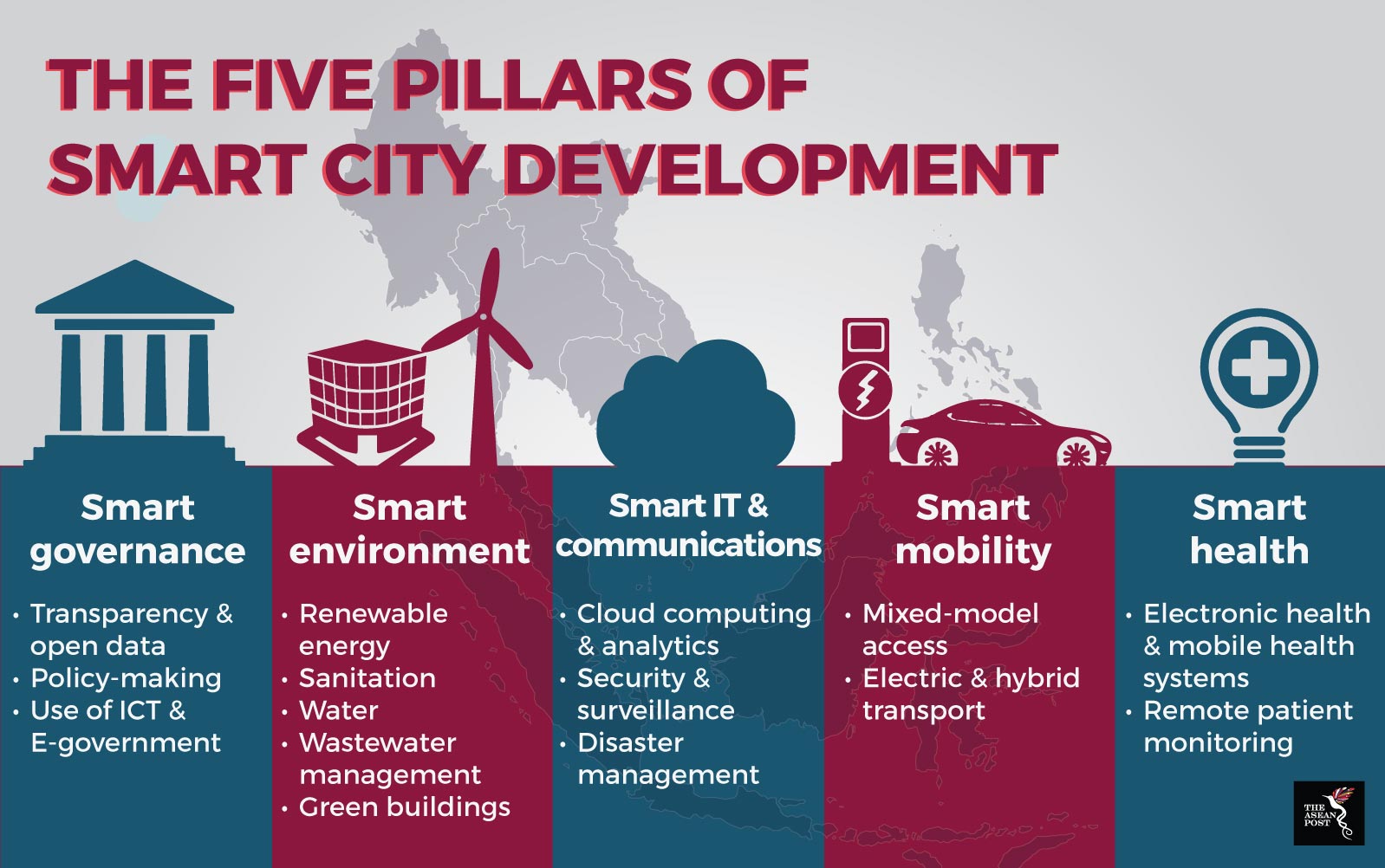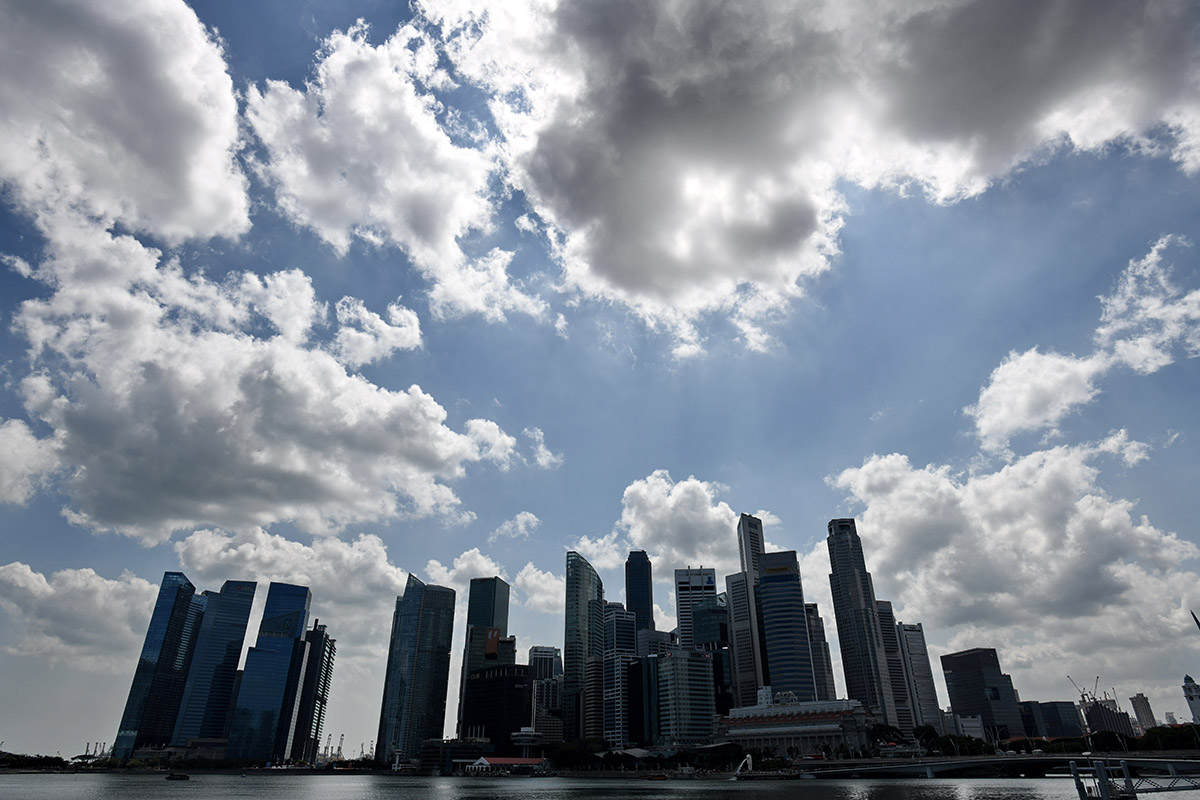A smart city is one that adopts scalable solutions so as to take advantage of ICT in order to increase efficiencies, reduce costs and enhance quality of life, according to technology conglomerate Cisco.
Smart cities can help to overcome the strain on urban resources brought upon by rapid urbanisation, an aging population, and a changing energy climate. This would help ASEAN meet its long-term sustainable development goals. According to the Brundtland report, sustainable development means 'development that meets the needs of the present without compromising the ability of future generations to meet their own needs'.
Singapore, for one has implemented a Smart Nation initiative which extends into innovating mobility, health and living, mobility and services to meet its priorities for sustainable development. In terms of sustainable development, Singapore aims to maintain sound economic growth, good quality of life, maintaining a clean and green environment, and making the best use of resource.
Meanwhile, these have to be implemented in a pragmatic way. For example, Singapore’s drive for smart mobility solutions, which have attracted Robert Bosch as its technology partner. As a provider, inter alia, of automotive technologies, Robert Bosch wants to implement efficient mobility which is accessible to all user groups. An example of its efforts includes looking at traffic congestion in Southeast Asia as one problem it could help solve. Other traffic-based pain points included air pollution and land scarcity, for example.
According to Martin Hayes, President of Robert Bosch Southeast Asia, whether a city is ready to incorporate smart city solutions also depends on the availability of infrastructure, and a sound regulatory framework to create certainty for investors. Hayes also cited Singapore is a good example of a smart-city ready environment because it has the available tech talent and government support to pursue these objectives.
“If something works in Singapore we can also bring it to other parts of Southeast Asia,” he added.
Additionally, cross-sector collaboration between different stakeholders such as governments, system integrators, housing development authorities, and property developers, is also needed to form an ecosystem.
In Indonesia, the lack of collaboration between its federal and local governments regarding smart city solutions caused an initial lag in such initiatives being implemented over the past decade. However greater involvement by its federal government of late has seen the rise of smart cities in Bandung and Jakarta. Last year, Indonesia announced plans to increase smart city spending from US$1.8 million to US$7.3 million in 2018 according to online government policy content platform OpenGov.
Meanwhile, Thailand’s National Smart City Committee also enlists help from the Energy Ministry, Digital Economy & Society Ministry and Transport Ministry to develop smart city solutions in Phuket, Chiang Mai and Khon Kaen.

Source: AT Kearney
Governments first need to understand the real-world problems faced by citizens in order to apply technology to these pain points. A recent recommendation by international research firm Garter in was to create open data strategies which guaranteed access to all interested parties in the city’s growth, including the provision of measurements and key performance indicators as method of explaining progress of smart city initiatives in an open way.
From the viewpoint of a technology partner, the success of each smart city, could be gauged against the problem smart city solutions were aimed at solving. Since the variables differed from country to country, it was difficult to draw equal comparisons across Southeast Asia. Each project tended to be tailored to the particular country because it was designed based on the resources available there, to meet local pain points. Much also depends on whether there are good business models for technology partners and investors to work on.
“We’ve been approached by many different people wanting many different business models. Myanmar, for example, is looking for companies to collaborate with on developing a business model for their smart city development. It’s very varied,” Hayes added.
In fact, for the rest of ASEAN, the implementation of smart city solutions may yet take time. This is even as the necessary infrastructure and regulatory frameworks to draw such projects are still in the works. Whether sufficient collaboration between the different stakeholders is taking place, will also determine the speed of such projects being implemented. Despite this, ASEAN countries may yet take comfort in the fact that they can learn from one another’s efforts to meet their own sustainable development goals.
